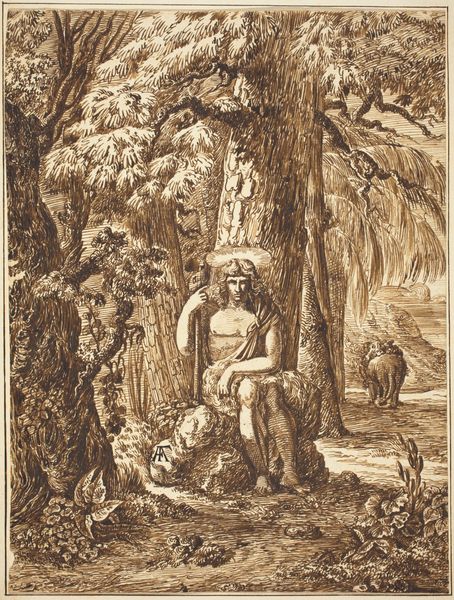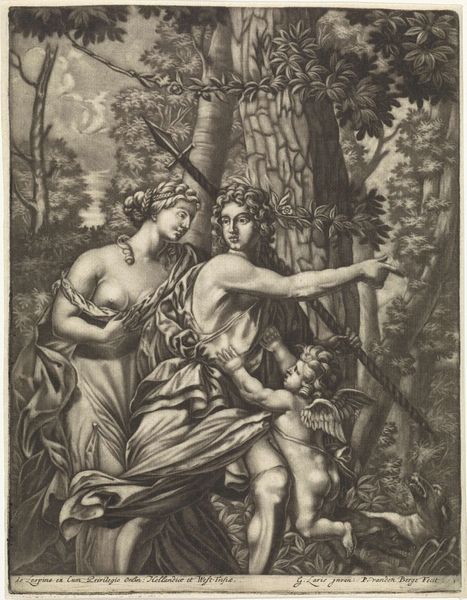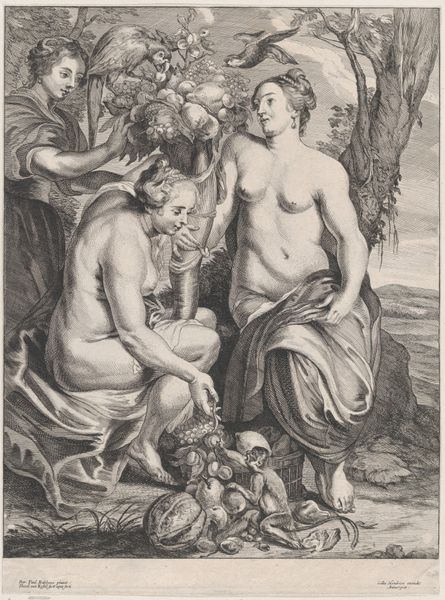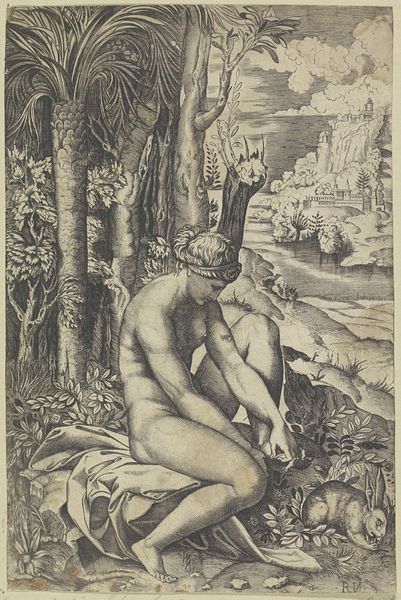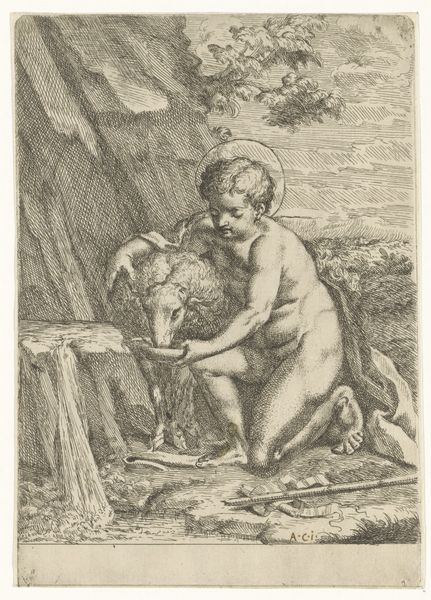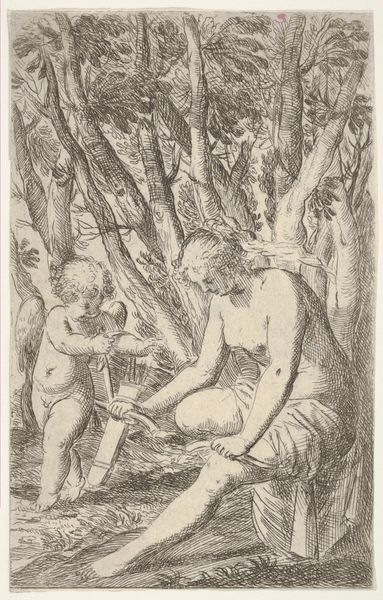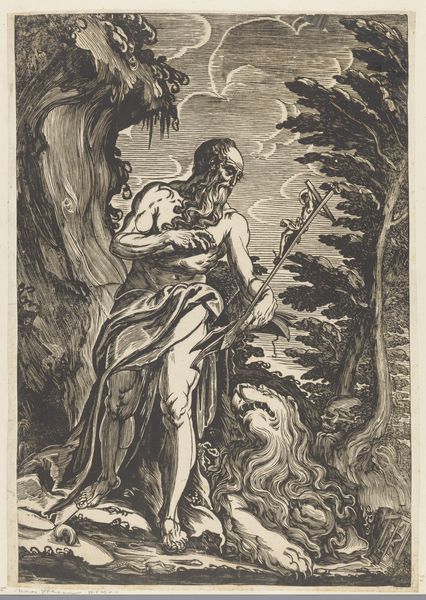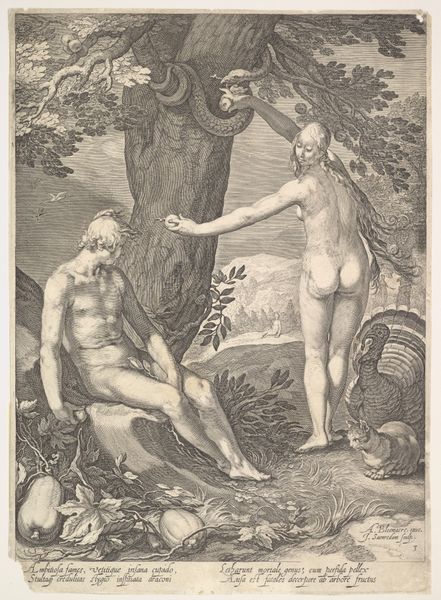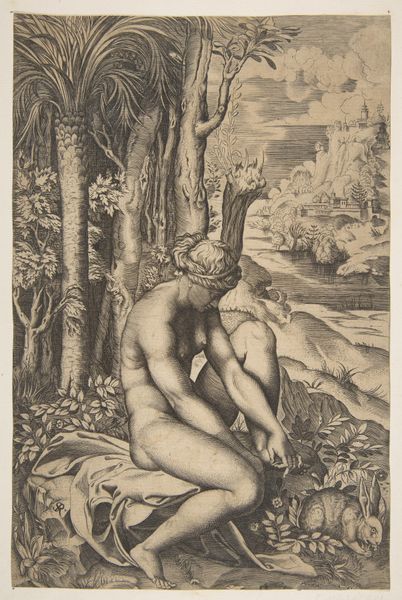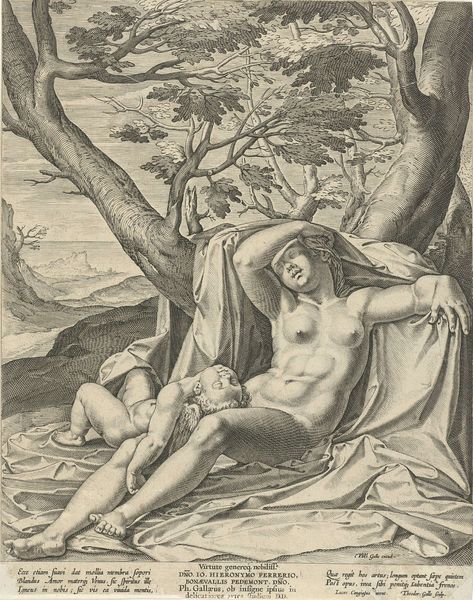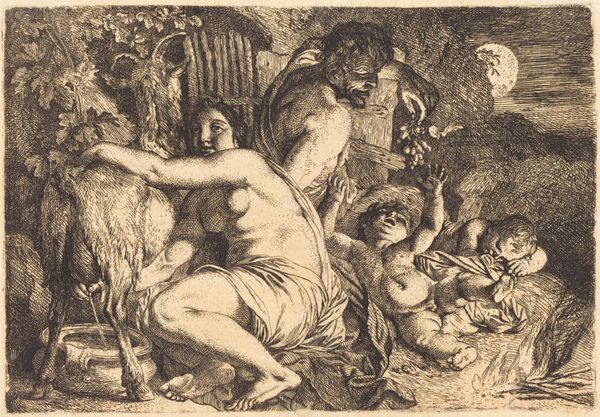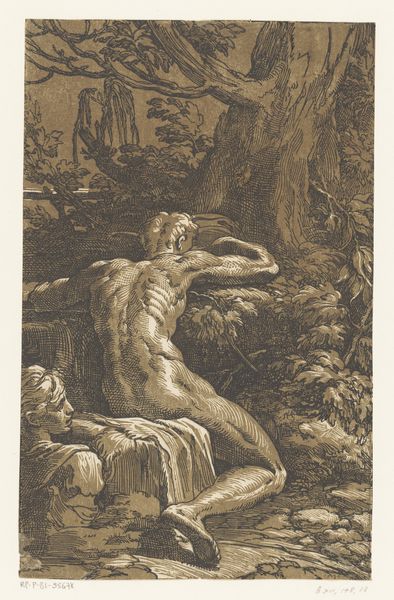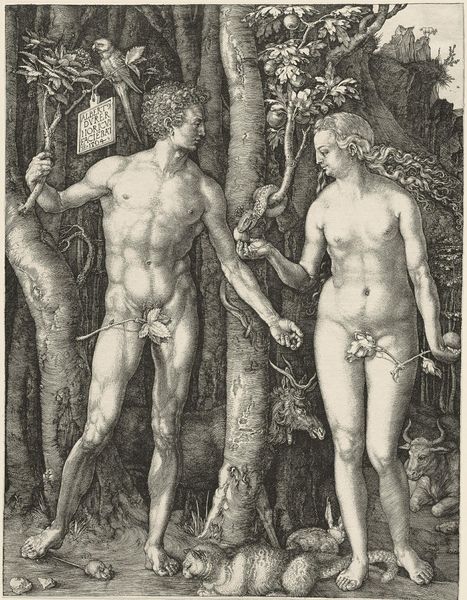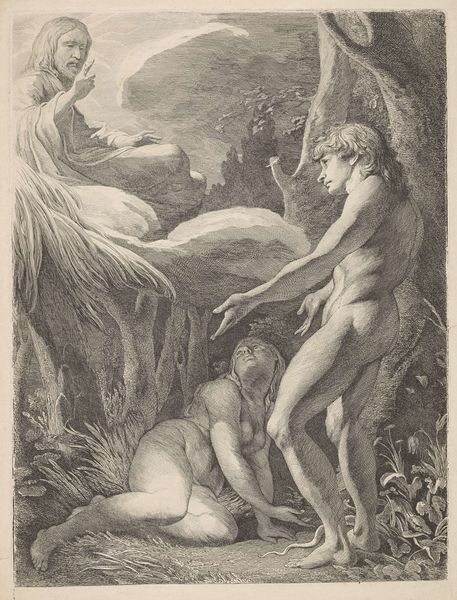
painting, oil-paint
#
portrait
#
baroque
#
painting
#
oil-paint
#
landscape
#
figuration
#
oil painting
#
animal portrait
#
mythology
#
human
#
history-painting
#
portrait art
Copyright: Public domain
Curator: Here we have Adam Elsheimer's "St John the Baptist," painted in 1605. Editor: There's something very pastoral about this piece. Despite the figure of John the Baptist himself, my eyes keep being drawn back to that almost unnaturally verdant landscape. Curator: It’s interesting you pick up on that! Elsheimer was revolutionary in how he integrated landscape with figuration. Prior to this, the landscape was often a backdrop. Here, it feels vital, teeming with its own spiritual presence. How might we understand the Baptist’s role within such a setting, particularly given his traditionally austere, isolated persona? Editor: It suggests an interesting juxtaposition. On one hand, he's part of a broader redemptive narrative signified by the lamb; but on the other, there's a very clear connection with pre-Christian nature religions and pagan identities. It disrupts simplistic notions of faith. The symbolism embedded into the snake around his staff adds a similar ambivalence. Curator: Indeed, we could interpret the snake wound around the staff as symbolising knowledge or transformation, not just evil. This reframing forces a reconceptualization of the canonical, masculine narrative within the history painting traditions from the Baroque era. He has discarded any pretense and looks pensive rather than ascetically resolved. Editor: Absolutely! And how are we supposed to engage with such quiet non-compliance during the Counter-Reformation and the historical conditions of rising religious conformity across Europe? It challenges a singular reading that centres an imposing authority. Curator: His work served as an important catalyst in the changing understanding of the political potency and influence art can play for his later peers such as Rubens. Editor: A vital consideration, and another example of art providing invaluable and multi-faceted documents of cultural resistance throughout history. This is the magic of exploring artworks and being constantly open to reinterpreting art history with more inclusivity! Curator: Precisely. Elsheimer encourages us to see the nuances of faith, nature, and power during moments of intense socio-religious reshaping.
Comments
No comments
Be the first to comment and join the conversation on the ultimate creative platform.
